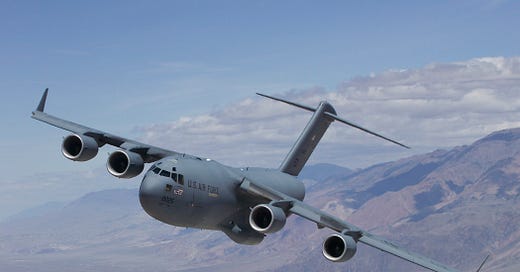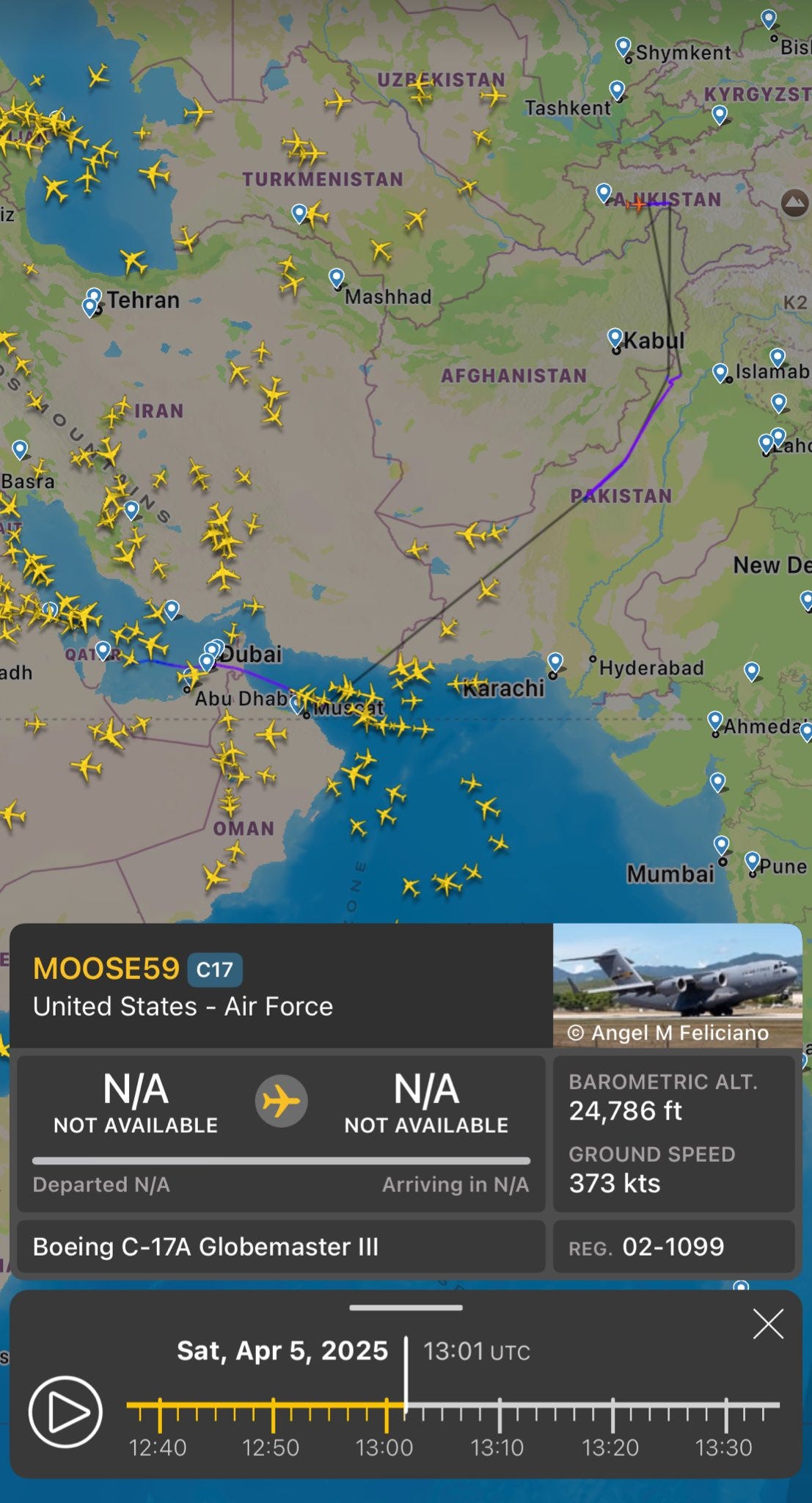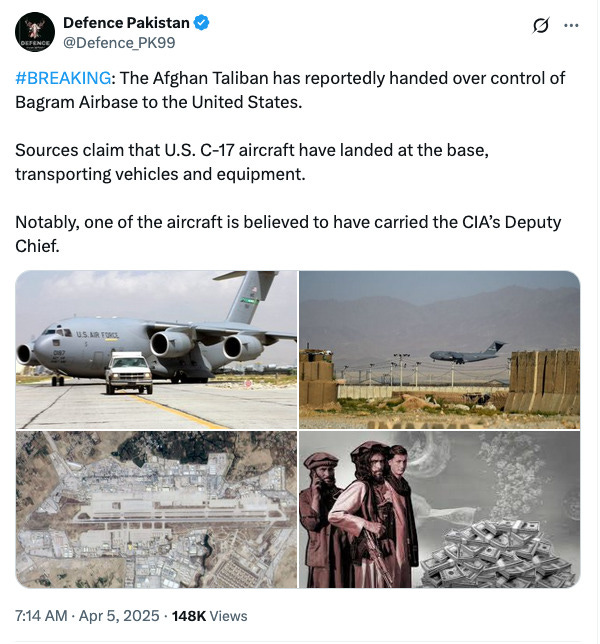The US Air Force covert C-17 mission to Tajikistan and the disinformation that followed
Flight tracking data reveals a US Air Force C-17 may have landed in Tajikistan, not Bagram airbase in Afghanistan followed by waves of misinformation and speculation.
On 5 April 2025, a US Air Force C-17 cargo aircraft (registration 02-1099) took off from Al Udeid Air Base in Qatar, travelling through Pakistani and Afghan airspace before entering Tajikistan. Contrary to numerous online reports, the aircraft did not land at Afghanistan’s Bagram Airbase. Instead, radar data shows that after briefly turning off its transponder over Afghanistan likely to maintain secrecy, the C-17 reappeared in Tajikistan, descending unusually low to around 20,000 feet near the strategically sensitive Nurek Dam. It hovered there for approximately two hours before returning to Afghan airspace, ascending to over 31,000 feet on its return journey.
Earlier the same day, two smaller aircraft known for intelligence and surveillance purposes were observed performing unusual flights within Afghanistan. A Cessna 208 Caravan (N162EL), using an invalid transponder code "0000," repeatedly flew slow, north-south routes from Kabul up to Baghlan province at around 6,400 feet, suggestive of detailed observation or signal interception. Meanwhile, a Quest Kodiak 100 conducted circular and looping flights west of Kabul around Chahar Dehi and Kotal-e Onay areas, typical of reconnaissance, mapping, or surveillance operations.

This simultaneous aerial activity strongly implies a coordinated intelligence or military operation. Despite this, official US statements have not yet clarified the precise reason for the C-17’s mission, leaving analysts to speculate. Two plausible scenarios emerge: either the US was conducting covert negotiations or exchanges with Russia—considering the significant Russian military presence in Tajikistan or it delivered sensitive cargo, possibly intended for Russian personnel.
Five days after this flight, on 10 April, a notable prisoner exchange between Russia and the US occurred in Abu Dhabi. Facilitated by intelligence agencies from both countries and mediated by the UAE, the swap involved Ksenia Karelina, a dual US-Russian citizen imprisoned by Russia on treason charges after donating $51.80 to a US-based Ukrainian charity, and Arthur Petrov, a German-Russian accused by the US of illegally exporting sensitive microelectronics to Russia. This exchange, involving high-level intelligence officials, including CIA Director John Ratcliffe, suggests the possibility of diplomatic or logistical ties to the mysterious C-17 flight days earlier.
Misinformation and false claims
The spread of misinformation began swiftly, led by The STRATCOM Bureau, a Pakistani X (formerly Twitter) account with over 50,000 followers and known affiliations with Pakistan’s Inter-Services Intelligence (ISI). The account was among the first to claim that the U.S. Air Force C-17 was likely headed towards Bagram Airbase, despite a complete lack of credible evidence. The claim gained traction within minutes, amplified by a network of ISI-linked accounts and commentators who regularly circulate geopolitical disinformation.
Following this, Pakistani journalist Anas Mallick repeated the same narrative, stating the aircraft had landed in Bagram. Given his journalistic credentials, his post added a layer of legitimacy in the eyes of many, further muddying the waters.
The story then reached Khamaa Press, a reputable Afghan news outlet, which published a report citing a Medium article by Zark Shabab, a self-proclaimed journalist. Shabab’s account was later suspended by Medium for violating the platform’s rules. Khamaa’s lack of source verification allowed the rumour to leap into the OSINT community when prominent accounts, including OSINTdefender, shared the piece—mistakenly trusting Khamaa’s editorial checks.
https://x.com/sentdefender/status/1909464893146755377
To make matters worse, Russian media outlets joined in days later, promoting an even more sensational version of events. One article falsely claimed that CIA Director John Ratcliffe was on board the aircraft, pushing the narrative further into conspiracy territory.
Despite the abundance of open-source tracking data clearly showing the aircraft’s actual route and loitering over Tajikistan and not Bagram, the false narrative continued to circulate. This case demonstrates how a single coordinated claim, especially when seeded through networks tied to state intelligence services, can cascade through legitimate media and OSINT spaces, overriding verified information in real time.






Very interesting